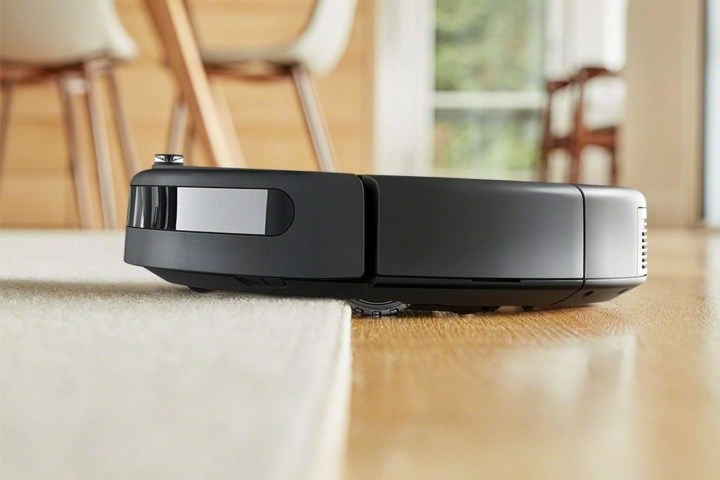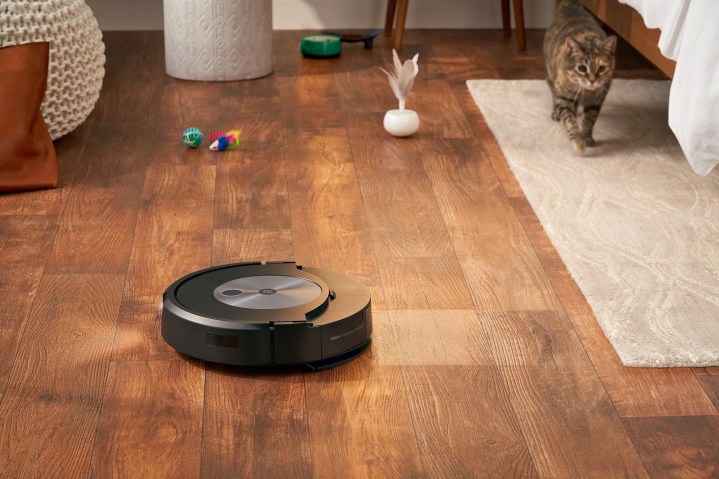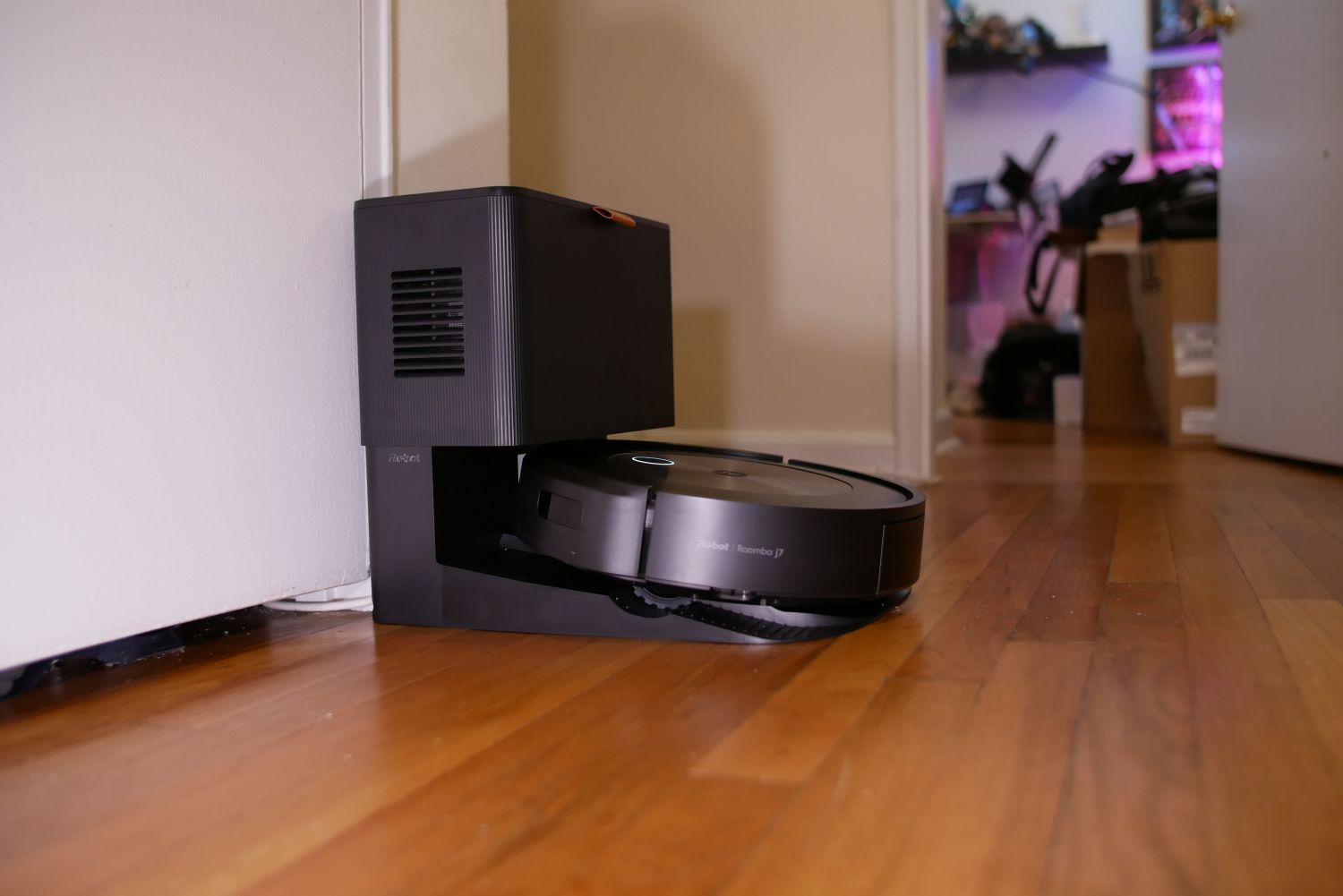Roomba and Roborock are two of the biggest names in the world of robot vacuums. Offering advanced smart technology, robust cleaning skills, and the ability to empty their own dustbins, robot vacuums from these two manufacturers are always easy to recommend. But if you’re trying to compare models across the two brands, you might run into a bit of trouble due to the sheer volume of options available in 2023.
Are you trying to find the right robot vacuum for your hom, but unsure if you should consider Roomba or Roborock? Here’s an in-depth look at the two companies to help you decide which is best.

Design
Side by side, the rounded designs of Roombas and Roborocks look very similar to one another. They both use rubber brushes and automatic adjustments for uneven surfaces and replaceable filters for air filtration. However, there are a few differences worth noting. Roborock has more hybrid models with additional capabilities for mopping (more on this below), and Roomba has more models with side brushes and a flattened front (like the S9 series) to help clean baseboards and corners more effectively. Overall, the Roomba designs are a bit more durable and versatile in the average home.
Winner: Roomba
Available models
There are three different iRobot series: the S9 line, the j7 line, and the i3 line. There are older versions, but not many are in circulation anymore.
Roborock also has a number of series, including the S8, S7, Q7, and E5 (you can see how it can be easy to confuse these two brands during consumer research).
While these lines may seem similar, Roborock really delivers when it comes to options. Overall, Roborock has a broader selection of robot vacuums, which gives you more choices and a better chance to find a model that’s just right for you.
Winner: Roborock
Battery life
The most advanced Roomba models promise a battery life of up to two hours (depending on the modes used and other factors), and most models have the ability to return back to their base stations and charge up again, then return to their cleaning duties. That makes battery life less of a factor than it once was, but it can still matter when dealing with particularly large rooms or cutting down on wear and tear.
Roborock’s vacuums can vary, but many have larger batteries that can last up to 200 minutes (again, this can vary based on cleaning modes). Roborock models also typically include the ability to return to their stations for recharging when necessary, but generally, its models can last longer out on the floor with a single charge.
Winner: Roborock

Cleaning power
Let’s talk about suction! The more suction a robot vacuum has, the more easily it can tackle larger bits of debris, and give carpets a more thorough cleaning. While iRobot saysits current vacs are 40x more powerful than their original models, that doesn’t say a lot about suction levels, although it appears that Roombas top out around 2,500Pa in terms of suction rating.
Many of Roborock’s models also offer a 2,500Pa suction rating. However, Roborock’s latest flagship model, the S8 Pro Ultra, tops out at a staggering 6,000 Pa — which should be more than enough to suck up all the debris hiding in your carpets.
Winner: Roborock
Smart features
Both vacuum brands have apps that are packed with capabilities and bots filled with sensors. Roombas use Imprint Smart Mapping to scan, learn, and label rooms in your home. You can control floor plans and schedule individual room cleanings as you see fit, or order the Roomba to perform a spot cleaning if there’s a specific mess to clean up. You can also set barriers around specific furniture or rugs the Roomba should avoid (Roombas will avoid stairs and other drop points on their own). The more advanced models have dirt detection to tell when a spot is dirtier so the bot can increase cleaning power. The app can even give you suggestions on how and when to clean over time. And with the right base station, Roombas can automatically empty their bins so you don’t have to take out the trash for weeks at a time. Oh, and Roombas work with voice assistants like Alexa, Siri, and Google Assistant for audible instructions.
Roborocks are also seriously smart, They use lidar technology to map out rooms and Adaptive Route Algorithms to find the best cleaning paths. You have full control via the app, from setting schedules and adjusting suction power to creating invisible walls so the vacuum will avoid certain areas. Most Roborock models also have the ability to return to their stations and empty their bins, so you don’t have to worry about monitoring them as much. They also work with Alexa and Google Home voice commands.
While much of this smart technology gives users the same conveniences, Roomba models can have a few extra features, like spot cleaning and dirt detection, which put them slightly over the edge.
Winner: Roomba

What about mopping capabilities?
It took a few years, but both Roborock and Roomba offer devices that can mop and vacuum without any manual input. The Roomba combo j7+ is the best example of this, as it employs a mophead that can lift to the top of the device when traveling on carpet, ensuring no water drips onto the floor.
Roborock doesn’t offer a product that’s quite as sophisticated, but the S8 Pro Ultra works in a similar fashion. Instead of a mop that retracts to the top of the vacuum, it simply lifts itself up 5mm when traveling on carpet. That should be fine for most households, but folks with plush carpets might notice the mop skimming along the top of the carpet.
Actual mopping performance varies by model, but it’s hard to go wrong with a product from either lineup.
Winner: Tie
Pricing
At the high end, both Roomba and Roborock models tend to cost over $1,000. The Roomba S9+, for example, is $1,000, while the ultra-deluxe Roborock S8 Pro Ultra is $1,600. At the lower end, you can find budget models for around $500. With this much range in choice, there isn’t a lot of difference here as long as you’re willing to compromise to find a price you can live with.
Winner: Tie
Conclusion: Which robot vacuum brand is best?
While Roomba still has superior smart technology, Roborock is seriously impressive with its potential power levels and the frequent combination of suction and sonic mop vibration. There’s a reason we’ve been impressed with Roborock’s latest technology before.
At the end of the day, the features inside the vacuum are more important than the logo on the outside. And since Roborock and Roomba now produce robot vacuums with a wide variety of price tags — and almost all of them are built to high standards — we suggest perusing through both catalogs to see which one catches your eye.

